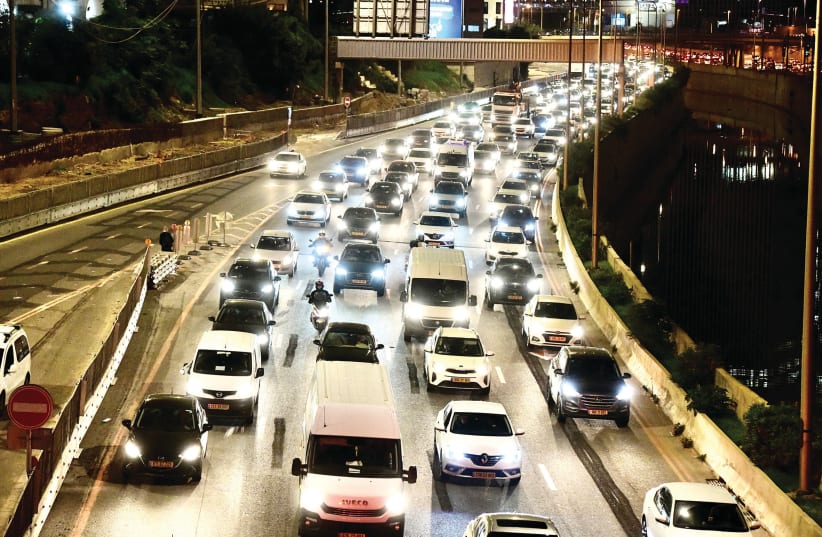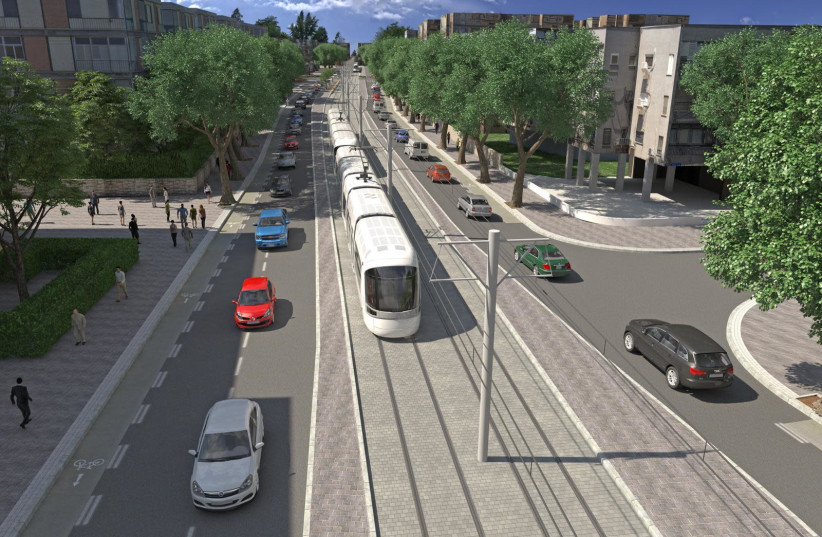Considerable attention is being given to the increased tariffs that are to be levied on sugary soft drinks and disposable dinnerware and cutlery if the budget that has been recently cobbled together is approved this November. The debate on this matter is certainly legitimate and both sides of the aisle are presenting compelling arguments.
As a result of this “sexier” issue, an equally important provision of the proposed budget is hardly being noticed. Once the budget passes and is set into motion, Israel will be on the way to joining a number of other major cities – London, Singapore, Stockholm, and, eventually, New York – that have implemented a “congestion charging” program, with the objective of better managing the frustrating traffic jams and dangerous pollution that commuters to Tel Aviv endure every day.
Principally, a major objective of such programs is to provide the funding necessary to improve and upgrade the infrastructure on which public transportation in urban centers operates. In Tel Aviv, an elaborate system of buses will be complemented by a Light Rail Mass Transit system that is currently under construction and should, according to the latest projections, be ready for public use by the end of 2022.
In addition, there are plans to build a subway system comprised of three underground lines which will supplement both the Light Rail and Israel Railways systems; it is anticipated that the ground will be broken for this undertaking in 2025, with 2032 targeted for its completion.
Projects such as these are not inexpensive and asking drivers to pay the social benefits-related costs for the convenience of using automobiles is not at all unreasonable. A rebuttal to this argument is that the gas required to operate vehicles is already being taxed. Such a tax, however, is, for most part, non-discriminatory; the congestion charge focuses on vehicles that enter crowded population centers and contribute to stifling congestion, choking pollution and both fatal and injurious accidents.
Project funding, though, is not the only reason why a congestion charging program makes sound urban sense. Tel Aviv would surely benefit from the reduced stress that those who prefer to walk or pedal their way around the city invariably experience. And until we reach a time when goods can be delivered as email attachments and technical personnel can arrive for service calls using Star Trek transporters, vehicles such as trucks and vans will still be necessary.
A reduced number of private automobiles traversing the Tel Aviv streets will significantly add to the efficiency and maneuverability of commercial and emergency vehicles, lowering the costs of doing business as well as ensuring that illnesses and injuries receive treatment faster.
Needless to say, not all vehicles will be subject to the charges that will ultimately be implemented by the program. Exemptions, for example, should be made for vehicles driven by or for the handicapped or offered as incentives to utilize alternative fuel vehicles or for vans which have a minimum number of seats. And, obviously, the charge can be reduced or even suspended on Shabbat and holidays. The Transportation Ministry clearly has available a wide array of pricing schemes that can be applied to this program.
There are, to be sure, a number of identified disadvantages to congestion charging, which, I’m sure, have been considered before the program was included in the budget. Opponents can very well argue that businesses within the area that is covered by the charging will lose considerable revenue as retail customers will prefer to visit shopping malls and commercial centers that they do not have to pay to visit.
The two-year preparation and implementation of the program will be rather costly, requiring the use of state-of-the-art GPS technology to levy the charges as well as to chase down those who are delinquent in payments. It can be expected, moreover, that Israeli ingenuity will regard this tariff as a challenge, and will make use of falsified license plates or create phony commercial firms in order to avoid the charge. And, finally, the program can be viewed as a regressive tax since those with lower incomes will more negatively feel the effects of the charge.
There was a time when owning a car in Israel was a luxury that few could afford. That has clearly changed as the number of automobiles per capita is far greater than it was a quarter of a century ago. The roadways, however, that currently exist in and around Tel Aviv will not change dramatically in the years and decades to come, but the numbers using those roads will increase significantly. At some point, the capacity of those roads will not be able to bear the number of vehicles accessing them, resulting in time being very badly wasted, and a severely diminished quality of life. Congestion charging has proven to be an effective method of making the roads more manageable and safer by determining who gets to use those roads and who doesn’t.
Our former prime minister did not waste much time calling the proposed budget the worst in Israel’s history, although I suspect he was merely doing what any leader of the opposition would be expected to do. I have not, admittedly, gone through the budget with the proverbial fine-tooth comb, but I find congestion charging to be more than a positive provision. If the experience elsewhere is an indication, we can look forward to improved vehicular, pedestrian and bicycle movement within Israel’s commercial and economic center and less polluted air for our children to breathe. It is in the interest of bettering our lives that the movement of vehicles in congested areas must be regulated, and not the other way around.
If for no other reason than to have this program get underway, a bi-partisan “yea” must echo through the Knesset chamber this November.
The writer is a retired technical communicator currently assisting nonprofit organizations in the preparation of grant submissions and struggling to master the ins and outs of social media.

